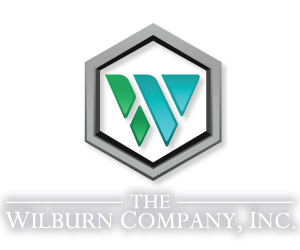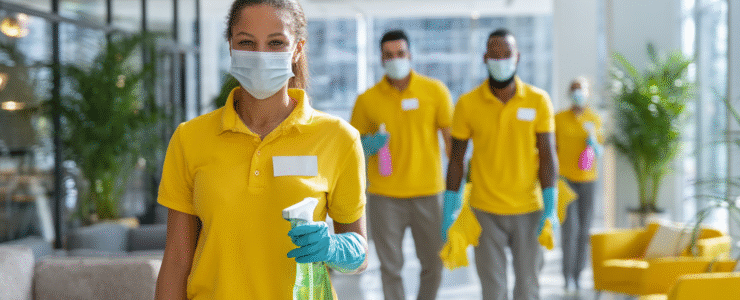
Keeping a workplace healthy takes more than the occasional deep clean. Facility managers in offices, government buildings, and commercial spaces are expected to control bacteria, viruses, and other pathogens while meeting compliance rules.
Commercial sanitizing services focus on high-touch surfaces and shared spaces, using EPA-approved products and equipment designed to reduce illness and keep people safe.
As expectations grow for sustainability, security, and transparent results, understanding how professional sanitizing differs from standard cleaning makes it easier to choose the right approach for your facility.
What Is Included in a Commercial Sanitizing Service?
Facility managers sometimes ask how sanitizing differs from regular cleaning or disinfection. Cleaning removes visible dirt and dust.
Sanitizing lowers the number of germs on surfaces to safe levels, while disinfection destroys both bacteria and viruses on pre-cleaned areas.
Service Scope: Areas and Surfaces
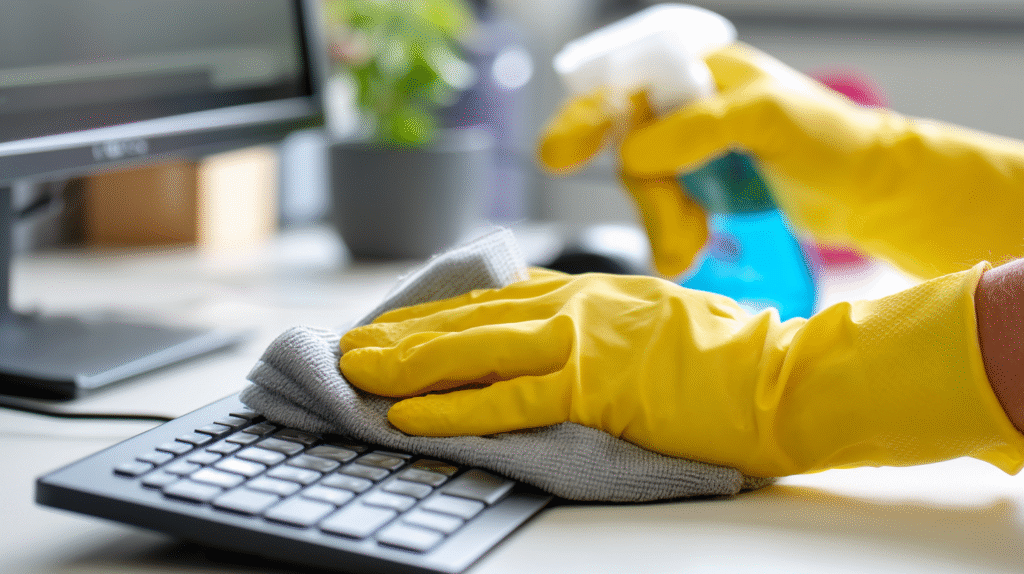
A commercial sanitizing service focuses on high-touch points and shared spaces where germs collect.
These areas include doorknobs, elevator buttons, light switches, shared desks, restrooms, breakrooms, and common areas.
Entryways, handrails, and high-traffic corridors also receive special attention.
Tools, Equipment, and Product Standards
Providers rely on EPA-approved solutions and tools suited for large facilities.
Electrostatic sprayers and fogging devices help ensure even coverage. Microfiber cloths and HEPA-filter vacuums support particle removal and help protect indoor air quality.
Integration and Customization
Many facility managers integrate commercial sanitizing with regular cleaning services, janitorial routines, and disinfection programs.
This layered approach keeps facilities aligned with health standards and operational needs.
A strong provider will adjust services to your risks, use approved products safely, and offer flexible options that fit your compliance requirements and day-to-day operations.
Commercial sanitizing goes beyond surface-level cleaning, creating a safer environment for everyone in the building.
The Step-by-Step Commercial Sanitizing Process
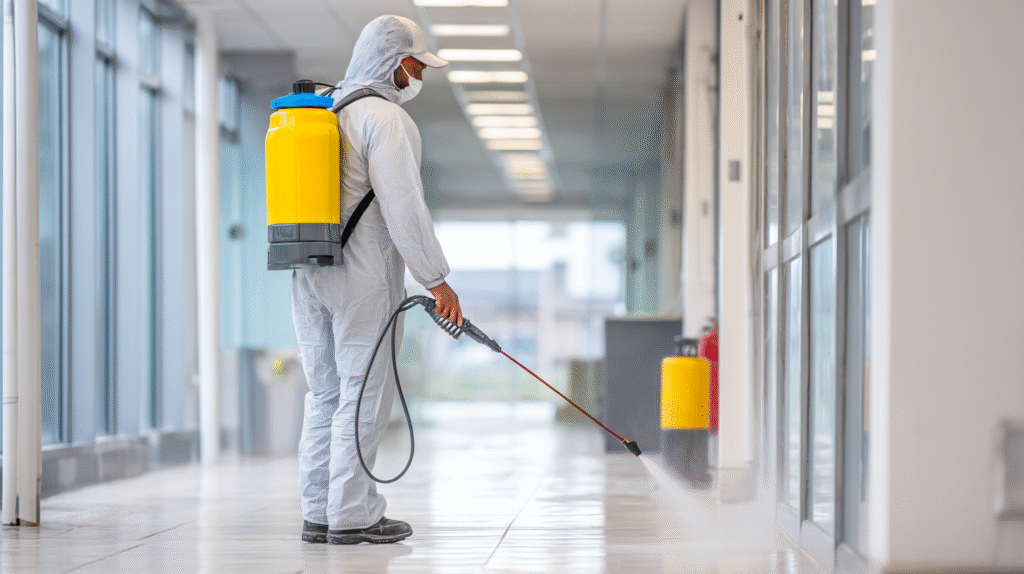
Every sanitizing service starts with an assessment of the property. Providers identify high-touch areas, risk factors, and compliance requirements, then create a plan based on the building’s layout and how it’s used.
Assessment & Planning
Providers coordinate with managers to confirm timing and make sure all target areas are included.
Service Execution
Crews pre-clean surfaces, then apply EPA-approved sanitizing agents with the proper dwell time to ensure effectiveness. Quality is monitored through digital checklists and supervisor oversight, so managers can see progress as it happens.
Post-Service Review
After service, supervisors inspect work and provide a report documenting products used, tasks completed, and any site-specific observations. This review helps improve future services and confirms that standards are met.
Certifications, Compliance, and Safety Protocols
Sanitizing services are held to high standards for health, safety, and sustainability. Facility managers should expect providers to demonstrate:
- Green Cleaning Certifications – GS-42 or equivalent certifications confirm eco-friendly products and processes that support healthier indoor environments.
- Regulatory Compliance – Full adherence to OSHA and EPA standards, using only EPA-registered disinfectants and safe handling procedures.
- Secure Access Protocols – Background checks, IDs, and training for staff working in high-security or sensitive facilities.
- Ongoing Training & Documentation – Continuous education on regulations, equipment, and chemicals, supported by records available for audits or compliance reviews.
Choosing providers who prioritize certification, compliance, and staff training helps protect tenants, keep facilities in line with regulations, and support safer workplaces.
Efficacy and Measurable Outcomes
Commercial sanitizing offers clear benefits for facility managers. Targeting high-touch surfaces and shared spaces helps reduce workplace pathogens, supports compliance, and strengthens defenses against outbreaks.
Tracking Performance
Professional providers use digital checklists, inspections, and real-time reporting to document every step.
Detailed service logs show exactly what was sanitized and when, so managers can see what was done and know standards are met.
Health and Operational Benefits
Regular sanitizing can support improved indoor conditions by reducing allergens and contaminants. Many facilities also report fewer sick days and less absenteeism, which helps reduce absenteeism and keep operations steady.
Beyond Cleanliness
The advantages go beyond health. High-quality sanitizing maintains property value by keeping spaces more attractive and welcoming.
Occupant satisfaction improves when staff and visitors feel safer, and consistent reporting reassures tenants, staff, and leadership.
Integrating sanitizing with ongoing cleaning and disinfection creates a plan that addresses everyday risks while keeping the facility ready for new health concerns or regulatory changes.
Determining Service Frequency and Best Practices
How often a facility needs sanitizing depends on occupancy, usage, and risk level. High-traffic areas, shared workspaces, and public zones typically require more frequent attention, while low-use areas can often be serviced less often.
Tailoring Schedules to Facility Needs
Different environments call for different approaches. Offices with rotating staff or dense workstations may benefit from daily sanitizing.
Government buildings and REIT-managed properties often adjust schedules based on tenant activity and compliance requirements. High-security sites or areas with sensitive equipment call for extra precautions to keep operations safe.
Adapting to Seasonal and Emergency Risks
Service needs can change over time. Seasonal illnesses, outbreaks, or health mandates can all trigger the need for increased attention. During cold and flu season, additional service helps limit disruptions. In the event of a known exposure, rapid-response sanitizing can limit disruption and reduce risk.
Integrating and Optimizing Your Program
Sanitizing works best when paired with regular cleaning and periodic disinfection. This combined approach maintains visible cleanliness while controlling pathogens. To keep your program effective, facility managers should:
- Increase service during outbreaks or occupancy spikes.
- Use tenant or staff feedback to adjust high-touch focus areas.
- Review service logs and reports regularly to confirm compliance.
Regular reviews keep the program effective and responsive to new risks, ensuring a safe and compliant environment year-round.
Why Choose Wilburn for Commercial Sanitizing Services
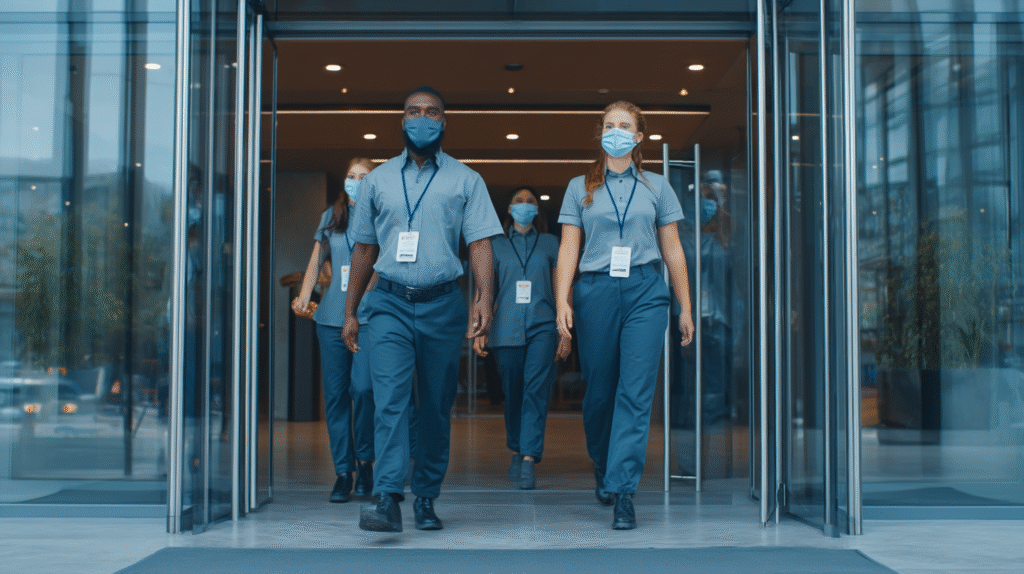
With more than 25 years of experience, Wilburn delivers commercial cleaning services that meet the unique needs of corporate offices, high-security government facilities, and REIT-managed properties.
Each facility is different, and our team designs services that account for safety, sustainability, and compliance.
Certified Expertise and Proven Results
Our GS-42 certification reflects a commitment to sustainable cleaning practices that protect both people and the environment.
We rely on EPA-approved products and proven sanitizing methods, supported by our proprietary Performance Measurement Management system. This approach allows us to document every service clearly.
Specialized Solutions for Secure Facilities
Wilburn’s staff undergo rigorous background checks, security training, and ongoing education in the latest cleaning and disinfection techniques. Whether managing access in a high-security government site or coordinating with multiple tenants in a REIT property, we adjust protocols to fit each site’s needs while keeping standards consistent.
Reliable Service and Rapid Response
When unexpected needs arise, our local teams respond quickly to keep operations moving. From routine sanitizing to urgent requests, we provide consistent, high-quality service you can depend on.
Wilburn works as a partner, helping clients maintain clean, secure, and healthy environments.
If you’re looking for measurable outcomes, clear communication, and a team that understands the demands of secure commercial spaces, we’re ready to help. Contact us for a custom assessment and learn how we can support a safer, compliant facility.
Frequently Asked Questions About Commercial Sanitizing Services
What do commercial sanitizing and commercial cleaning services include?
Commercial cleaning services cover routine janitorial services like trash removal, floors, and restrooms, while sanitizing and disinfection services target harmful bacteria and viruses on high-touch surfaces. Together, they help facility managers maintain a clean environment that protects employees and customers.
How are professional commercial cleaning services different from regular cleaning?
Professional cleaning services use EPA-approved cleaning products, proven techniques, and highly trained staff. A commercial cleaning company can also provide specialty services such as carpet cleaning, deep cleaning, and electrostatic disinfection, which go beyond what an in-house team can typically deliver.
What certifications or safety protocols should I expect from a commercial cleaning company?
Look for providers committed to health and safety with GS-42 green cleaning certification, OSHA and EPA compliance, and documented training. Trained staff should follow strict access protocols in secure facilities and use safe cleaning solutions that support a healthy environment.
Do facility managers in medical facilities or manufacturing facilities need special cleaning programs?
Yes. These industries often require specialized cleaning and disinfecting services to meet compliance standards. Professional commercial cleaning companies create tailored cleaning programs for medical facilities, manufacturing facilities, and offices, ensuring the highest level of safety for employees and visitors.
How often should commercial spaces be sanitized or disinfected?
Frequency depends on occupancy, industry, and risk. High-traffic offices may need daily service, while some businesses schedule on a recurring basis. During outbreaks or seasonal illnesses, increasing disinfecting services helps reduce sick days and supports employee productivity.
What kinds of specialty services are available besides sanitizing?
Professional cleaning services often include carpet cleaning, post-construction cleanup, deep cleaning, and trash removal. These specialty services are valuable when you want to make a lasting impression on clients or need extra attention after construction or renovation work.
How do professional cleaning services support business goals?
A clean facility creates a healthier environment, improves employee productivity, and leaves a lasting impression on customers. By working with a committed commercial cleaning company that offers flexible solutions and proven expertise, businesses benefit from reliable maintenance at a quality level that fits their budget.
How can I request a free quote or set up a custom cleaning program?
Most commercial cleaning companies make it easy to contact their team for a free quote. Facility managers can request tailored solutions, discuss special requests, and build a cleaning program that serves the specific needs of their property, employees, and industry.
